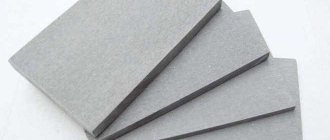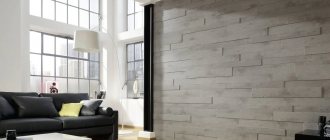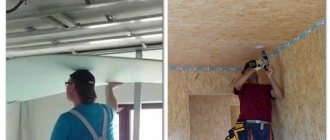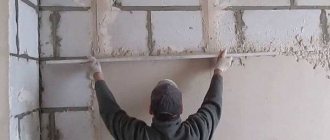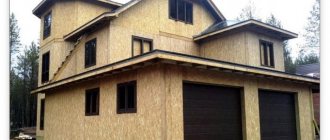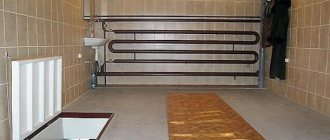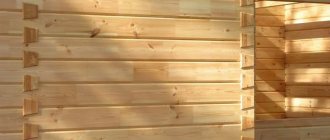Wall finishing materials
Until recently, walls in private houses were simply covered with plaster, which was painted with water-based paints or wallpaper was glued onto them. Even earlier, the walls were simply whitewashed with lime. Today, the variety of materials used for wall decoration is so huge that it becomes more and more difficult to choose every year. Therefore, most consumers seek advice from professional designers who have information about all finishing materials. They are like fish in water in this category of building materials.
So, let's figure out what finishing materials exist.
Wallpaper
This material is still very popular today. Moreover, quite a wide variety of it has appeared on the market:
- paper;
- non-woven;
- vinyl;
- glass wallpaper;
- photo wallpaper;
- metallized;
- and others, others, others.
The assortment is wide, the choice is huge both in color, texture and structure. Manufacturers even offer paintable wallpaper. They have an original white color that can be repainted up to 15 times, choosing any paint.
Variety of wallpapers for wall decoration Source vistcard.ru
In fact, wallpaper is still popular, and its demand is not decreasing. The reason is the incredibly huge number of species and subspecies. At the same time, the market offers wallpaper that imitates other building materials. For example, brick, stone, sand, leather, wood and so on. That is, you can create a unique interior in your home with little money, decorating it in any style.
The only requirement for the wallpapering process is that the wall is level. Therefore, wall surfaces are carefully plastered, puttied and sanded. If the house is wooden, then its walls are covered with plywood or plasterboard; today they have been replaced by OSB boards. It is the leveling of the wall surface that increases the cost of finishing materials. Wallpaper itself is an inexpensive material, of course, in comparison with other materials.
Regarding the choice of wallpaper, some criteria should be noted:
- paper wallpaper is short-lived , afraid of moisture and temperature changes;
- vinyl wallpapers are the thickest , they easily cover minor wall defects and differences in plane;
- leveling layer must be placed under non-woven wallpaper , because this type of wallpaper is translucent and all dark spots can be seen through it;
- photo wallpaper for the interior design of the room , then they will fit perfectly into the room;
- today you can use it, where the owner of the house chooses a drawing, pattern or photograph.
Photo wallpaper on the wall of the house Source plejadatapet.pl
Paints
Let's start with the fact that decorating walls in a private house with paints is at the peak of popularity. Their variety on the market is not as large as that of wallpaper, but they are represented by a good line. We must immediately make a reservation that before painting the walls must be leveled to the maximum. Craftsmen often apply several layers of finishing putty to achieve the perfect result.
Variety of paint and varnish products Source m.2gis.ru
What manufacturers of paint and varnish products offer:
- Acrylic paints . After drying, this material forms a durable film on the walls that can even be washed with water. The colors of acrylic paints are bright and saturated. But this material belongs to the category of “non-breathable”.
- Silicone . This is a breathable material that is applied to the surface of the walls in a fairly thick layer, so it covers minor defects and flaws well. Forms a durable film. Disadvantage: the price is high.
- Silicate . They are based on liquid glass, hence the excellent strength characteristics. But for the same reason, it is impossible to apply another material to a wall coated with silicate paint. If you need to carry out repairs, you will have to get rid of this paint coating. In this case, the paint itself applies only to mineral surfaces: plaster or putty. It is better not to use metal, polymers, wood under silicate paint - it will peel off.
Wallpaper
The Chinese were very enterprising even before our era, having invented paper wallpaper back in the second century, and since then they have remained in a leading position. The raw material base has changed, technologies have improved, performance characteristics and appearance have improved, but the principle of wall covering itself has remained virtually unchanged. Nowadays it is a universal material, which is used both as the main material and for placing accents, both in budget and in exclusive interior wall decoration. All fights are divided into two main groups.
- Basic ones are white with a pronounced pattern or slight relief, designed for further coloring. An interesting option for those who like to change their decor frequently; all you need to do is repaint it and the rooms will have a completely different look.
- Finishing ones - do not require finishing except gluing; they can be either plain or with patterns or prints, smooth or embossed, depending on the type.
Wallpaper is characterized by different resistance to moisture and we are talking not only about the humidity conditions in the room, but also about direct contact. They are:
- Non-moisture resistant - they do not tolerate high levels of humidity, which is why they should not be glued to dachas where people visit several times in winter or never at all. In direct contact with water, high-quality ones will simply peel off, while budget ones will become unusable without the possibility of restoration.
- Washable – rather, wipeable with a damp cloth, thanks to the hydrophobic coating on the front side. They also should not be used in unheated rooms, but in high-traffic areas they will retain their appearance longer than others. It is not recommended to use aggressive household chemicals for cleaning; dishwashing detergent is sufficient for heavy soiling.
- Moisture-resistant - made from moisture-resistant materials, the surface does not absorb water at all, even if you squish it from a bucket onto the wall. They can be glued in bathrooms and other rooms with specific temperature and humidity conditions.
All information about the characteristics of the wallpaper must be indicated in the labeling.
Both practicality and decorativeness and the cost of wallpaper directly depend on their type.
- Paper ones are the lightest and most environmentally friendly, budget smooth single-layer collections do not pretend to be highly decorative, but attract attention at an affordable price. Exclusive collections of two-layer (duplex) and multi-layer paper wallpapers with embossing, silk-screen printing or spraying will decorate any interior, but will also cost accordingly. The main disadvantage of the paper type is its low wear resistance - they can be scratched, rubbed and stained with prolonged contact. Pattern fading is another of their weak points; if the room is sunny, you need to choose rolls with light-protective properties. But even they will last for several years before changing their appearance, since a long service life is not typical for paper wallpaper.
- Non-woven fabrics are an excellent combination of permeability and environmental friendliness with strength and a presentable appearance. This two-layer category with a paper base can be both base and finishing; if desired, the finishing ones can also be easily repainted with paint for interior work with good hiding power. Due to the density and relief texture, non-woven wallpaper hides minor defects in the base and will decorate even imperfect walls if you choose a thicker one.
- Vinyl ones are also two-layer, but unlike previous types they are impenetrable and far from being environmentally friendly, which is why they are not recommended for use in residential areas, not to mention children’s bedrooms. But in hallways, kitchens, bathrooms and other areas where resistance to abrasion, moisture and dirt is needed, they will be an excellent, “long-lasting” option. Thick vinyl can hide serious imperfections without the need for complex wall treatments.
- Fiberglass (fiberglass) - there are decorative and reinforcing, the former are used to prevent cracking of the base for further finishing. This can be either pasting with thin wallpaper, or painting or applying decorative plaster that is demanding on the surface. Decorative ones are characterized by a pronounced relief in the form of a geometric pattern or patterns and are designed for further coloring. Durable fiberglass is practically indestructible; it is not afraid of water, sun, or physical impact; resistance to stains depends on the paint used. This wallpaper is vapor permeable and does not emit any substances, and is resistant to mold and mildew.
- Natural - the most common are cork and bamboo, in the first case it is a thin cut of cork wood, in the second, lamellas assembled onto a base. It’s an expensive pleasure, but adherents of eco-style are willing to pay for natural coatings so that there is no plastic or composite inside.
- Photo wallpaper - they can be taken out as a separate type, despite the paper base, since they are used only in combination with other wallpaper or other finishing. In recent years, not just photo wallpapers with beautiful views or prints, but also 3D wallpapers with a stereo effect have become popular. Both photo wallpaper and optical wallpaper require not only the appropriate surroundings, but also the appropriate area of the room, as well as good taste, so that it turns out harmonious and not tacky. What can beautify in “small doses” is likely to disfigure in large quantities.
All wallpaper is fixed with adhesive; the specific composition and technology of application (on the wall, on wallpaper, on wallpaper and the wall) is indicated in the instructions and is tied to the type. The process does not require any special skill; rather, it requires diligence, careful adherence to the manufacturer’s recommendations and good glue.
Video description
From the video you can learn how to choose the right paint:
- Water soluble . This is a large group of paints for interior decoration of house walls. From the name it becomes clear that the composition is diluted with water, which evaporates after application to the wall. Masters believe that this is an ideal option for interior decoration of residential premises.
- Latex . It’s clear here – the base is latex. Such paints belong to the “washable” category. A powerful film that remains on the wall surface protects the painted surface from almost all types of loads. The best option for wet rooms. Experts recommend painting wallpaper with the latex variety.
- Alkyd . They contain linseed or soybean oil, organic and acidic substances. These are bright colors, quite durable and highly wear-resistant. Ideal for residential premises.
Painted walls of the room Source trendideas.net
Which paint to choose? Even a specialist cannot answer this question. Just take into account that it is better to use water-soluble ones in bedrooms, acrylic or latex in hallways. In wet rooms it is better to use alkyd, latex and acrylic.
Decorative plasters
Another popular category of materials for home interior decoration. These are plaster mortars, with the help of which they not only level the walls of a private house, but also form the decorative filling of rooms. What does the modern market offer today?
See also: Catalog of companies that specialize in finishing materials.
Textured plaster
This is a highly viscous and coarsely dispersed solution, the fillers of which are various types of fibers, stone chips, mica, pebbles, glass, etc. Can be applied to brick, concrete, wood and plastered walls.
Manufacturers offer a wide range of textured plasters that create different structures on the walls. The most popular: bark beetle, lamb, fur coat. Typically, such plasters are made based on cement. The peculiarity of this material is that the texture appears immediately after applying the plaster layer.
Textured plaster “Bark beetle” Source vseprobki.ru
Structural
This finishing material has a thin-layer structure, in which the base is acrylic or silicate, and the fillers are quartz or marble chips. Therefore, its appearance is a heterogeneous granular surface. Today, manufacturers offer a fine-grained structure that is very similar to even and smooth plaster.
The structural material is easy to lay even on plasterboard, chipboard, plywood and OSB. Not to mention the brick or concrete surface. It is not recommended to use this type of finish in damp rooms.
Structural plaster for interior work Source talkdevice.ru
Venetian plaster
Of all the plaster mixtures, this is the most expensive. The process of applying this type of plaster is also complicated. It is applied in several thin layers - up to 6 layers, each of which is well dried before applying the next one.
The end result is an imitation of marble or onyx. Today, manufacturers offer a variety with imitation of precious metals.
Venetian plaster on the wall inside the house Source vi.decorexpro.com
Specific types of plasters
We will not describe all the plaster mixtures present on the modern building materials market, we will simply list them:
- colored;
- rollerball;
- latex plastic;
- wet silk;
- sea breeze.
Procedure for carrying out internal work
The specificity of finishing a house inside is that finishing work is carried out in parallel with special ones, and compliance with the sequence of individual labor operations is the key to saving money and delivering the project on time.
It must be said that the problem of consistency between specialists is present not only in private housing construction, but also in large construction companies. Moreover, sometimes it is more pronounced in them, which is associated both with the peculiarities of logistics and with the employment of crews at other facilities.
Here is one example of such inconsistency when decorating the inside of a house.
Plasterers work in the house. Before installing the beacons, they asked why the electrical wiring was not installed on the walls. They were told that the electrician team was delayed and they could start plastering. As a result, the electricians arrived when the painting work was already underway and they had to make grooves in the plaster layer, which, after installing the wiring in them, were sealed by the painters. Thus, the electricians did extra work using expensive power tools, and the painters wasted time sealing the grooves.
To prevent this from happening, all internal work must be clearly divided and the sequence of their implementation must be arranged together with others .
Sequence of stages
Finishing can be represented in the form of three successive stages:
- rough;
- pre-finishing;
- finishing
Since there are three types of surfaces in one room - ceiling, walls and floor - these stages can differ significantly from each other. Therefore, for most work, the top-down principle is acceptable.
Sometimes it may not work. So, the installation of windows is done first, as well as the installation of plasterboard structures. But other “dry” operations - laying wooden floors, laminate flooring, wall panels, suspended ceilings (except plasterboard) - at the end.
Special work throughout the finishing process is also carried out in stages. For example, installation of main pipelines is carried out during rough finishing or before it, and external wiring is carried out after finishing. Hidden internal wiring involves installing grooves at the construction stage, and installing pipes in them before finishing. Plumbing fixtures and fittings (sinks, toilets, bathtubs, faucets) are installed after finishing is completed.
The same principle applies to electrical installation work. The wiring is installed before finishing, panels, socket boxes, distributors - after plastering work, but the sockets themselves, lighting fixtures, switches - after all finishing activities.
Considering the variety of design and decorative solutions used in interiors, each case is individual. But in any case, clear planning of the stages is very important and this must be done before starting finishing.
Video description
The video describes the types of decorative plasters and methods of applying them to wall surfaces:
Tile materials
Do not forget that tile materials have always been in demand. And if ceramic tiles are used in wet rooms, then stone (artificial or natural) is used in residential areas. At the same time, entire walls were lined with stone, which fit perfectly into the interior of private houses.
True, stone material is not a cheap pleasure. Therefore, manufacturers offer a cheap alternative - gypsum elements stylized as stone. Look at the photo below, which shows walls finished with gypsum material. Let us add that gypsum for interior wall decoration is an ideal option. It breathes, does not emit radiation, does not emit harmful substances, the material is lightweight and easy to install.
The walls of a private house, lined with gypsum bars, stylized as natural stone Source hi.decorexpro.com
Paint and varnish finishing materials
Paints and varnishes are one of the most popular building materials used to decorate the inside of a house. In addition to their decorative function, they protect external and internal structural elements from aggressive environmental influences. Depending on the composition, the material is used for both external and internal coatings.
Regardless of the type, the composition of the paint includes:
- Matrix binding component – provides adhesion (adhesion) to the surface being treated.
- Filler - gives the paint the necessary consistency to form a layer.
- Pigment is a coloring element of natural (iron lead, ocher, umber) or synthetic (zinc white, chromium oxide) origin.
- Additional additives (plasticizers, solvents) - individual for each type, are responsible for the technical and operational characteristics of the paint.
The main criterion for choosing paint or varnish is the binding component. Each type of binder forms its own group of paints and varnishes, determining its purpose and popularity.
- Water-based paint is the most popular and widely used in construction. It is odorless, environmentally friendly, dries quickly enough, ideal for interior decoration.
- Water-dispersion paint. The main binding element is synthetic polymers. Working with this group will not bring any inconvenience, since the paint is odorless and can be brought to the required consistency with ordinary water. After hardening, it forms a waterproof and fireproof coating.
- Oil paint. The binder is drying oil. The chemical reaction of drying oil hardening occurs due to the oxidation of the substance with oxygen from the atmospheric air. To speed up the process, drier catalysts are added to the oil paint. The same drying oil is used as a thinner to give the required consistency.
- Enamel paint is a mixture of varnish and dry pigments. For repair work, alkyd and nitro-enamel paints are used. They are brought to the required concentration with white spirit or turpentine, so they have a persistent, pungent odor. A day or two after applying the paint, the surface is ready for further use. Nitroenamel dries within an hour, forming a smooth, mirror-like surface effect. But this advantage is annulled by certain disadvantages - toxicity and fire hazard. They are rarely used in the interior finishing process.
- Varnish. Varnishes contain synthetic or natural resins and organic solvents. After complete drying, the varnish gives a fairly wear-resistant transparent or matte film on the surface. The presence of an organic solvent in the composition makes the varnish a toxic and fire-hazardous building material. Work with varnish at enterprises takes place in special chambers with good exhaust ventilation. At home, in the absence of large amounts of work, it is advisable to apply varnish outdoors. If surface varnishing takes place inside the house, it is necessary to ensure ventilation of the room. Under no circumstances should explosive solvent vapors be allowed to accumulate in a small area.
On a note! The interior decoration of a private house involves the use of environmentally friendly water-based paints - water-based and water-dispersed.
Water-dispersion paint
Working with water-based paints is not difficult, since they adhere well to almost any material, but the quality of painting depends on the degree of preparation of the surface.
- We carefully clean the base from dust and, of course, from traces of oil or soot.
- We treat the surface with a primer. The primer not only increases adhesion, it prevents paint from being absorbed into the pores of the base material, making it possible to achieve full-quality painting using fewer layers.
- Apply paint with a roller or brush, distributing it evenly over the surface of the base. Depending on the composition and consistency of the paint, 2-3 layers are required. Each subsequent layer is applied after the previous one has completely dried.
Gypsum panels
For unknown reasons, this material is not particularly popular. For example, manufacturers today offer gypsum panels covered with vinyl plate. Excellent cladding with high strength and decorative qualities. This is one hundred percent moisture-resistant material.
Probably, consumers are put off by complex installation, which increases the overall cost of the work. The cladding is assembled onto a frame made of aluminum profiles, which comes complete with gypsum vinyl panels.
Cork
And the last finishing material in our review is cork panels. It should be noted right away that this is the most expensive among panel materials. But cork has many advantages:
- increased heat and sound insulation characteristics;
- 100% environmentally friendly ;
- excellent external data ;
- high moisture resistance ;
- this material does not burn , but only smolders, the process begins at a temperature of +350C;
- does not absorb odors;
- Easy to install - simply stick it to the wall.
Is it possible to do the interior decoration yourself?
You can arrange the “inner world of the room” yourself. The quality of the actions performed will be amateurish (there are nuances that are rarely taken into account).
Why do you do the finishing yourself?
- Preliminarily, this appears to be a cost-saving measure.
- The pace of work does not have clearly defined deadlines.
- It seems that for myself the quality will be higher.
What is the result?
Poor quality design very quickly loses its original properties. Cracks and chips appear. The appearance becomes faded. There is a need to redo certain work. An additional, very significant expenditure of funds is generated.
Finishing by type of room
It is important to select finishing materials not only based on the general design concept, but also based on the functional purpose of the room.
The home has several functional areas:
- household (kitchen, toilet, bathroom);
- common areas (dining room, living room);
- personal space (bedroom, nursery, office).
Each room, most often, has different humidity levels and temperature conditions, so the finishing must be designed for the appropriate load. So, for example, in a bathroom or kitchen, maximum moisture resistance is important, so you should choose tiles or paint.
The living room and dining room are a place for imagination; all types of materials can be used here to suit the needs of the residents. In the bedroom and children's rooms, a balance of comfort and functionality is important. But in the office, functionality is even more of a priority than comfort.
If you want to give the whole house a single motif, you should choose the material that is most resistant to external influences. Brick interior decoration is popular in this direction.
Rolled finishing materials
Roll materials are one of the most common types of building materials for interior decoration. The lion's share of all rolled materials offered on the construction market is occupied by wallpaper. A large selection of textures and colors can satisfy the most sophisticated requirements.
- Paper wallpaper is widely used in the decoration of residential premises. Environmentally friendly, do not disturb the heat and air exchange in the room. Can be used almost anywhere, except in rooms with high humidity and the possibility of contamination. Thin single-layer paper wallpaper has been replaced by multi-layer wallpaper on a non-woven basis. Possessing all the positive qualities of its predecessors, non-woven wallpaper, due to its thickness, hides minor defects in the surface of a wall or ceiling and does not require careful preparation or an additional intermediate layer. The interior decoration of a frame house involves gluing thick wallpaper directly onto a wall made of OSB boards or plywood (only joints and seams are processed).
- Washable (moisture-resistant) wallpaper differs from paper wallpaper in its outer coating, which is easy to clean. It is not recommended for use in bedrooms due to fire hazard and poor ventilation, but for decorating a hallway, kitchen or bathroom it is just what you need.
- Cork wallpaper. The basis of cork wallpaper is paper onto which a thin (no more than 1 mm) cork veneer is glued. The extraordinary appearance, good sound insulation, environmental friendliness (only natural materials are used), and ease of maintenance make us turn a blind eye to the relatively high price.
- Natural wallpaper is made from plant material - bamboo, reed and grass. The high cost of wallpaper is fully compensated by its original appearance, environmental friendliness and all the advantages of natural materials.
In addition to wallpaper, polyvinyl chloride decorative finishing films (self-adhesive) are used in interior design. The material is of fairly high quality, is not afraid of moisture, is easy to clean, although it itself is resistant to pollution, it is completely breathable. Recommended for use in technical rooms (bathroom, pantry). In living rooms, PVC film should be used in fragments, as a decorative element.
Varieties of PVC film include roll coatings with a voluminous texture - vinyl and foam. This material is obtained by applying PVC mass to a base of thick paper, followed by foaming. During the foaming process, a texture is set - it can be a simple geometric pattern made up of three-dimensional figures, or it can be an imitation of brick or stone masonry. The peak of popularity of foam film occurred in the 80s of the last century. At that time, almost half of the hallways and corridors in the USSR were covered with it.
Wallpapering
